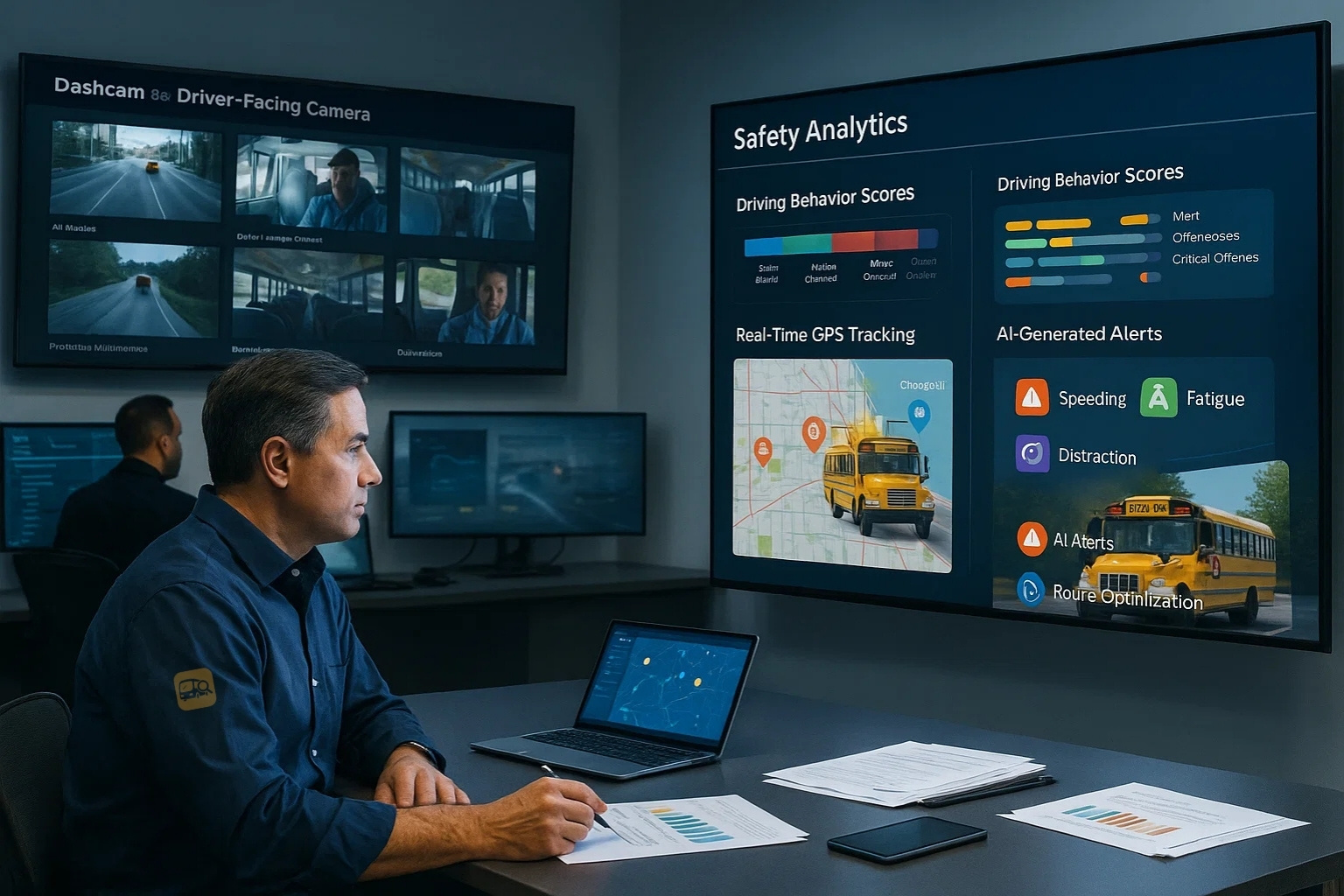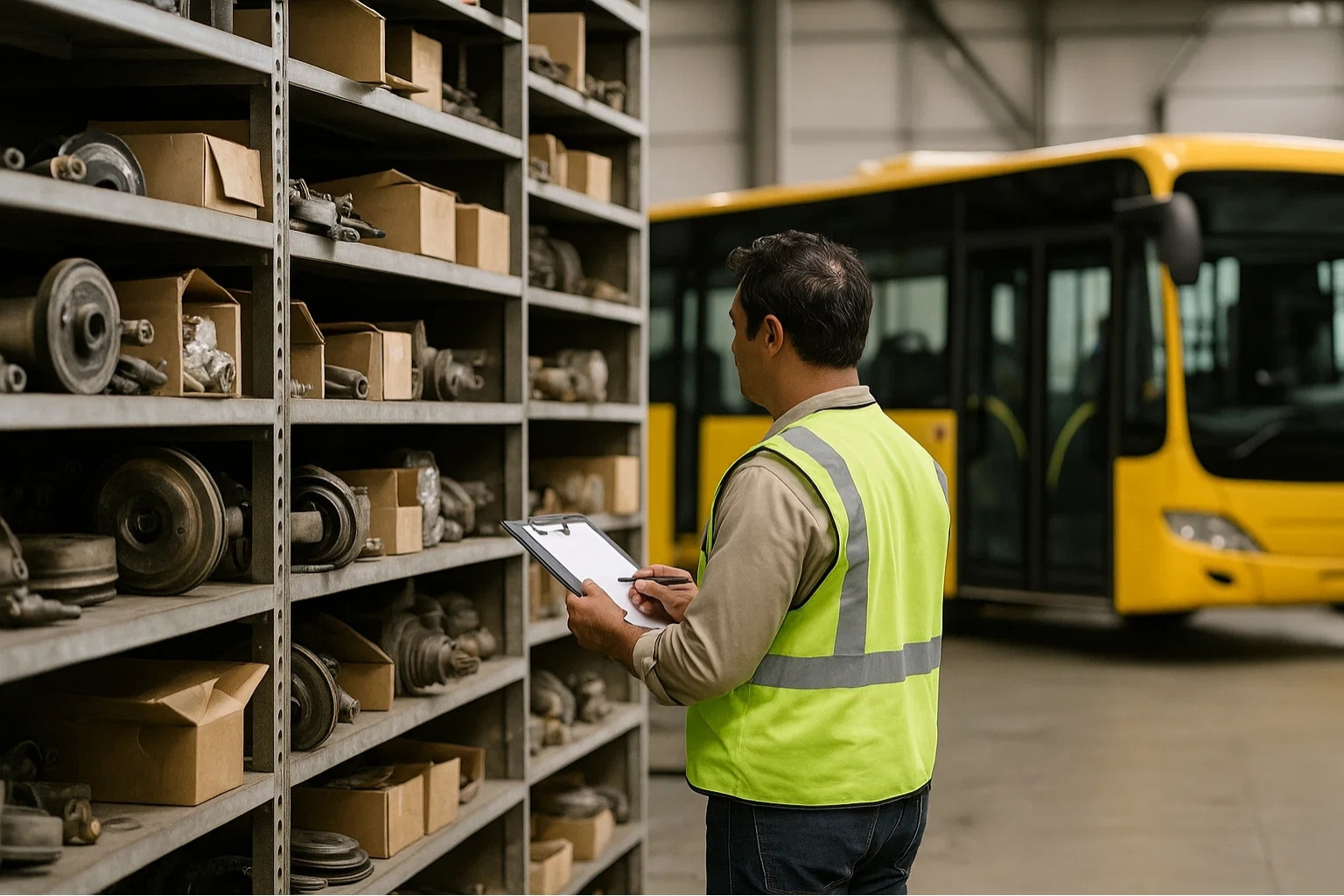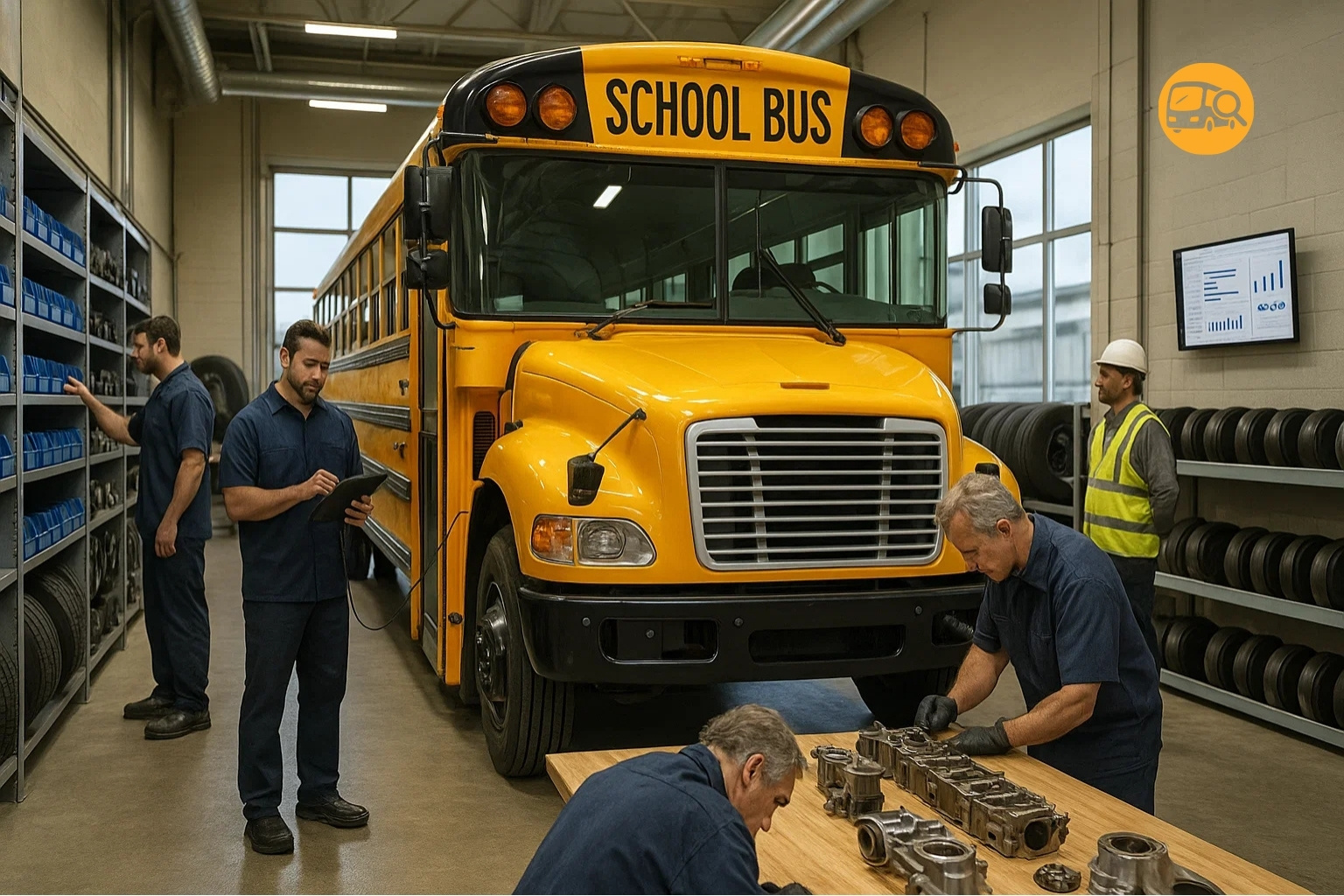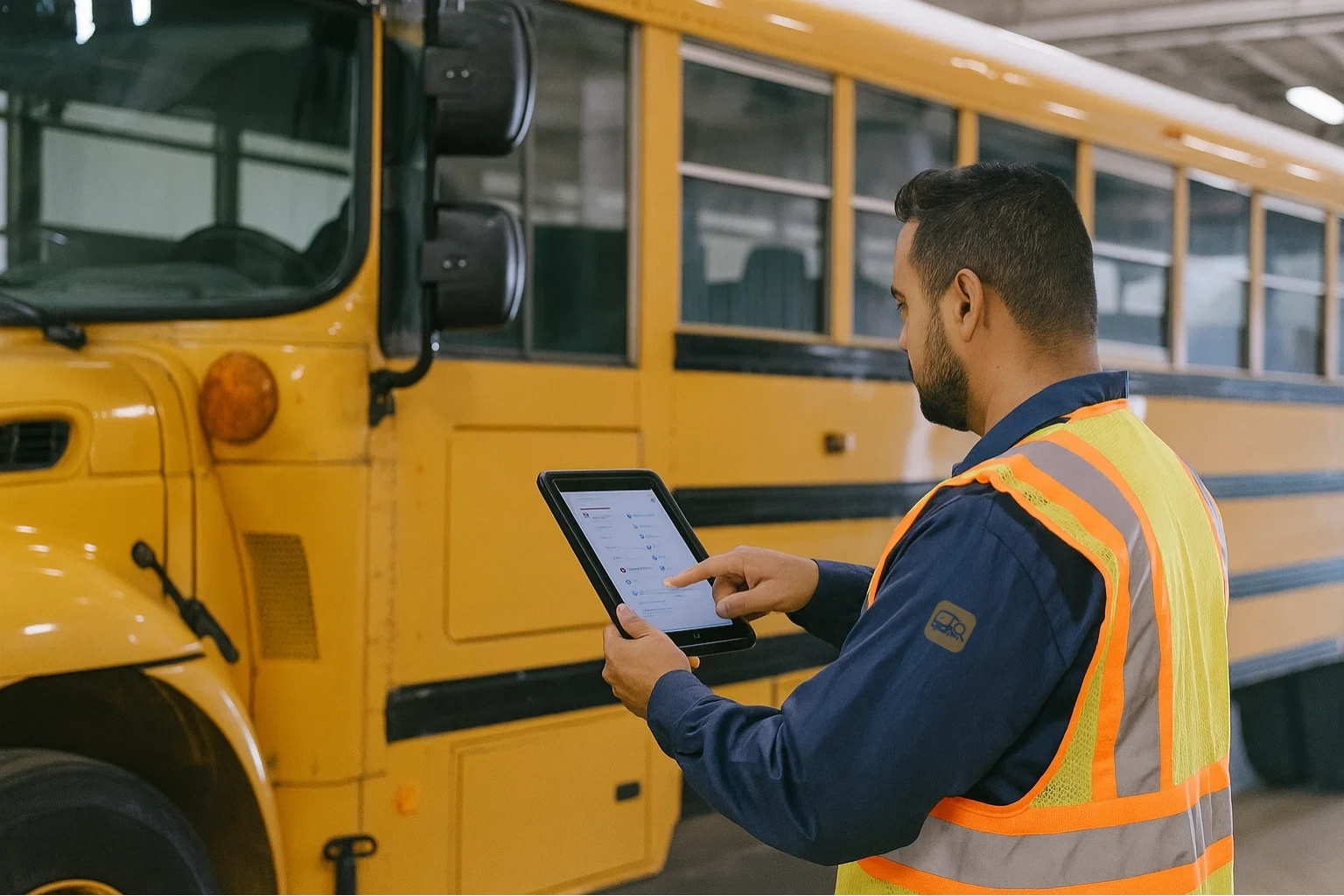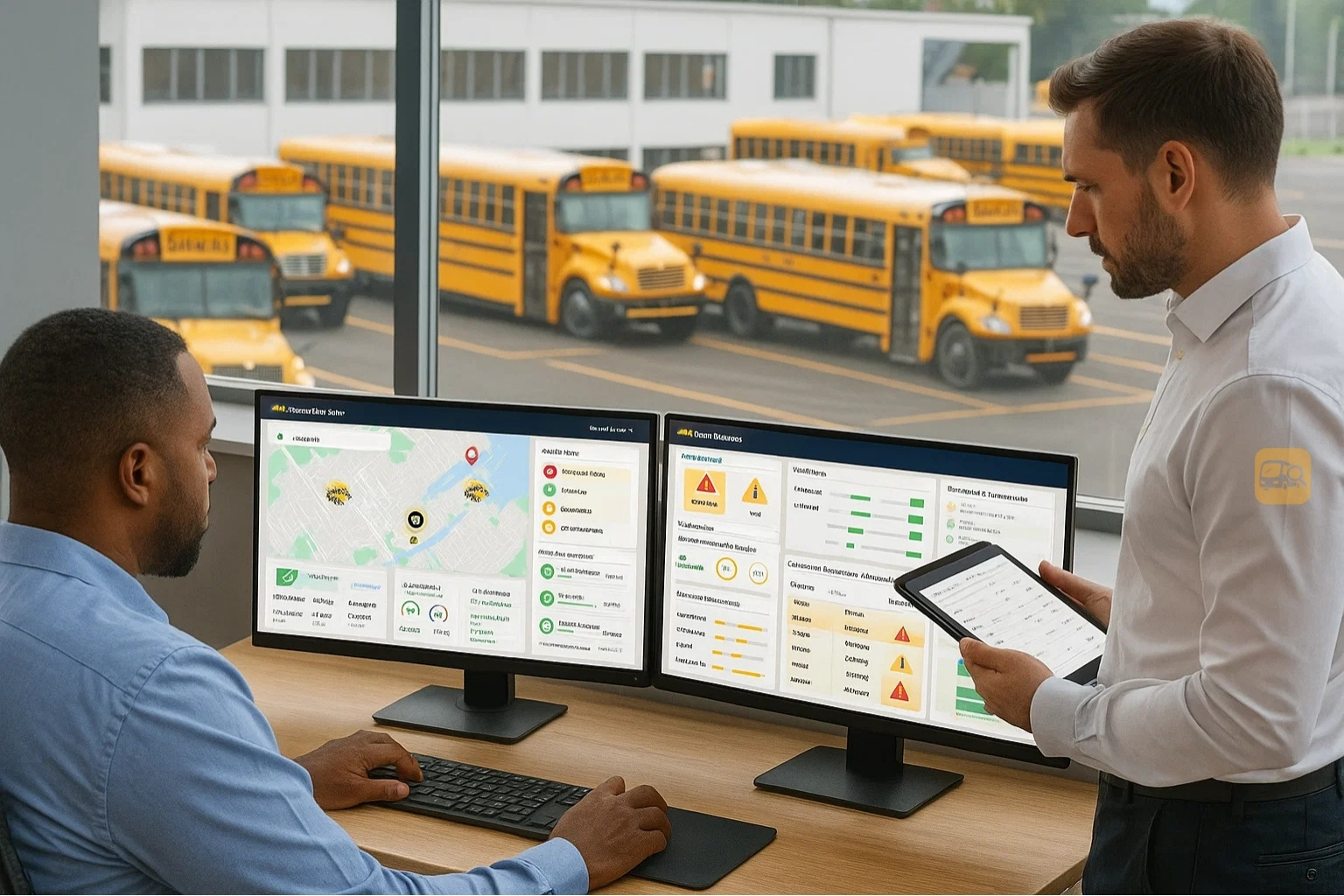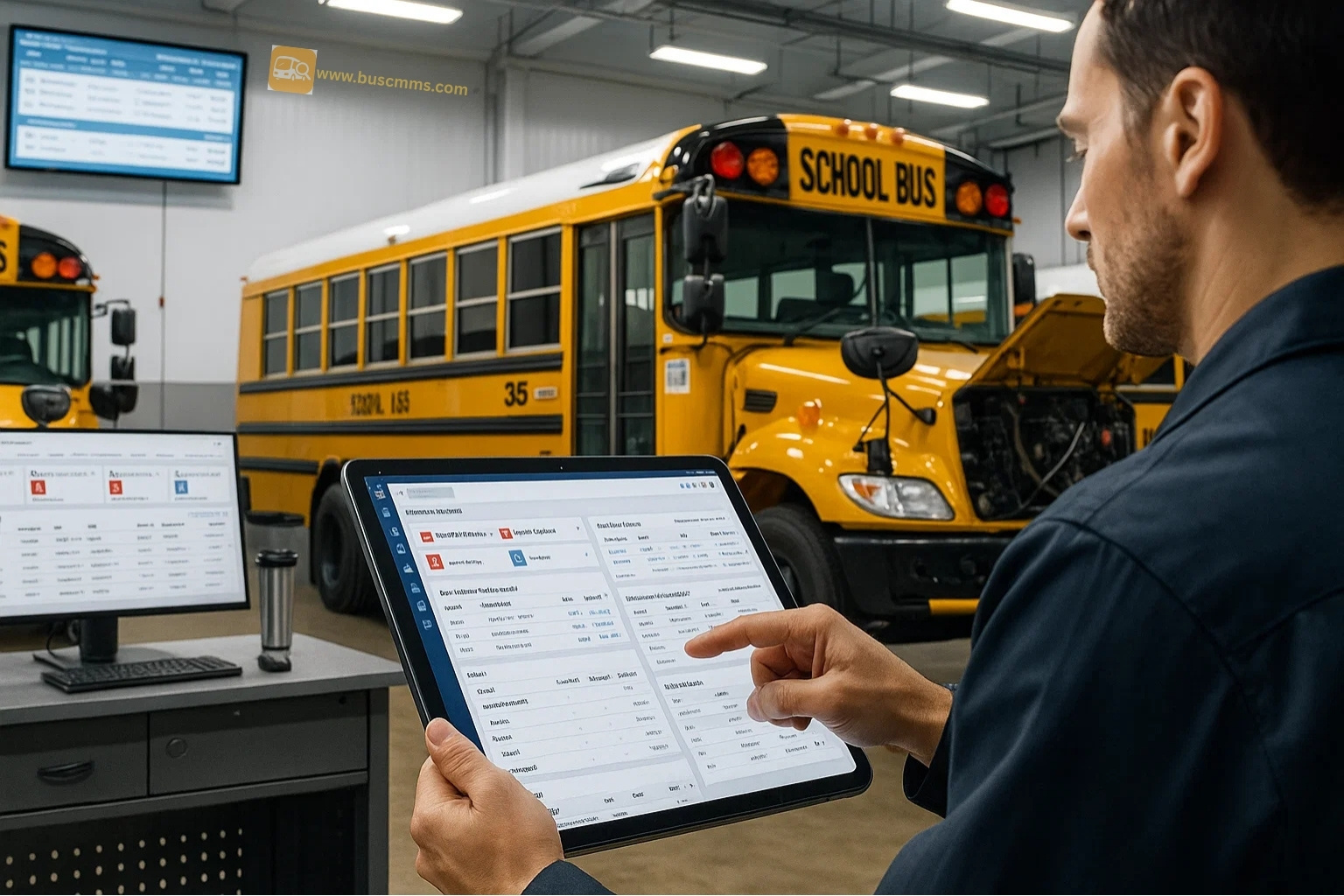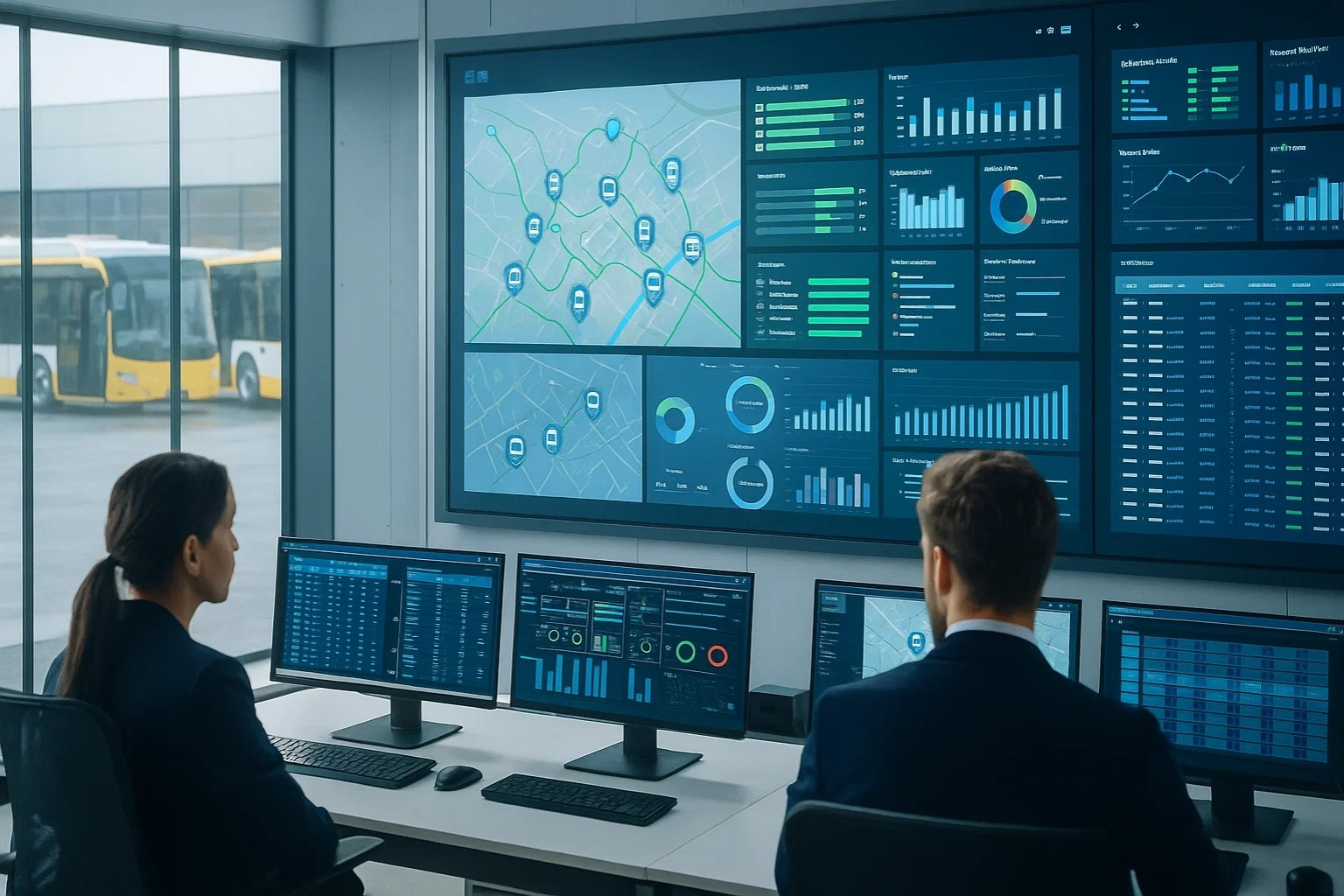In the fast-evolving landscape of transportation management, artificial intelligence is revolutionizing how we approach bus fleet driver safety. For US manufacturing professionals managing large vehicle fleets, the integration of AI-powered safety systems isn't just a technological upgrade—it's a strategic imperative that can save lives, reduce costs, and transform operational efficiency. With over 480,000 school buses alone transporting millions of students daily, the implementation of AI fleet safety technologies represents one of the most significant advancements in modern transportation management.
The stakes couldn't be higher. Fleet accidents cost American businesses billions annually in damages, legal fees, and operational disruptions. Traditional safety measures, while important, can no longer keep pace with the complex demands of modern fleet operations. AI technology offers a proactive approach that goes beyond reactive incident management, providing real-time insights and predictive capabilities that fundamentally change how we protect drivers, passengers, and the public.
Real-Time Driver Behavior Monitoring and Analysis
Modern AI fleet safety systems employ sophisticated computer vision and machine learning algorithms to monitor driver behavior in real-time. These systems analyze multiple data points simultaneously, including eye movement patterns, head position, facial expressions, and body posture to detect signs of fatigue, distraction, or impairment. Unlike traditional monitoring methods that rely on periodic checks or post-incident analysis, AI provides continuous, objective assessment of driver alertness and engagement.
The technology goes beyond simple observation. Advanced AI algorithms can differentiate between momentary distractions and patterns of unsafe behavior, providing contextual analysis that helps fleet managers understand not just what happened, but why. For instance, the system can distinguish between a driver checking mirrors (safe behavior) and texting while driving (unsafe behavior), triggering appropriate alerts only when necessary. This intelligent filtering reduces alert fatigue while ensuring critical safety issues are immediately addressed.
Implementation of these systems in manufacturing and logistics fleets has shown remarkable results. Companies report significant reductions in safety incidents within the first 90 days of deployment. The AI systems provide immediate in-cab alerts to drivers, helping them self-correct behaviors before they lead to accidents. Simultaneously, fleet managers receive comprehensive dashboards showing driver performance trends, enabling targeted coaching and training interventions that address specific safety concerns.
Predictive Maintenance and Vehicle Safety Optimization
AI technology transforms fleet maintenance from a reactive process to a predictive science. By analyzing thousands of data points from vehicle sensors, maintenance records, and operational patterns, AI systems can predict component failures before they occur. This predictive capability is particularly crucial for safety-critical systems like brakes, steering components, and tire conditions that directly impact driver and passenger safety.
Modern CMMS systems integrated with AI can process telematics data in real-time, identifying subtle changes in vehicle performance that human inspectors might miss. For example, AI algorithms can detect gradual brake degradation patterns weeks before they become safety hazards, automatically scheduling maintenance and ensuring vehicles remain in optimal safety condition. This proactive approach not only prevents accidents but also reduces emergency maintenance costs by up to 30%.
The integration of AI with fleet software enables sophisticated route optimization that considers vehicle condition alongside traditional factors like traffic and weather. If a bus shows early signs of mechanical issues, the AI system can automatically assign it to shorter, less demanding routes while scheduling maintenance, ensuring both operational continuity and safety. This dynamic allocation of resources based on real-time vehicle health data represents a fundamental shift in fleet management philosophy.
Ready to revolutionize your fleet's safety performance with AI-powered solutions? Experience how advanced fleet management systems can transform your operations and protect your drivers.
Getting StartedBook a Demo
Advanced Collision Prevention and Emergency Response
AI-powered collision prevention systems represent the cutting edge of fleet safety technology. These systems use a combination of radar, lidar, cameras, and sophisticated algorithms to create a 360-degree safety bubble around each vehicle. The AI continuously analyzes the environment, predicting potential collision scenarios and taking preventive action faster than human reflexes allow. From automatic emergency braking to lane departure warnings, these systems act as tireless co-pilots, compensating for human limitations and environmental challenges.
What sets modern AI safety systems apart is their ability to learn and adapt. Machine learning algorithms analyze millions of driving scenarios, continuously improving their ability to recognize and respond to dangerous situations. The systems can differentiate between a plastic bag blowing across the road and a child running into traffic, making split-second decisions that can mean the difference between a near-miss and a tragedy. This contextual understanding reduces false alarms while ensuring critical safety interventions happen when needed most.
In emergency situations, AI systems provide crucial support beyond collision avoidance. Automatic crash notification systems can instantly alert emergency services with precise location data and impact severity information, reducing response times significantly. The AI can also automatically compile comprehensive incident reports, including video footage, sensor data, and driver behavior analysis, streamlining insurance claims and helping fleet managers understand how to prevent similar incidents in the future.
Comprehensive Driver Training and Performance Management
AI transforms driver training from a periodic classroom exercise into a continuous, personalized improvement process. By analyzing individual driver patterns and behaviors, AI systems create customized training programs that address specific weaknesses and reinforce positive behaviors. This targeted approach proves far more effective than one-size-fits-all training methods, with fleets reporting up to 70% improvement in driver safety scores within six months of implementation.
The technology enables gamification of safety performance, creating friendly competition among drivers while maintaining focus on collective fleet safety goals. AI-powered scoring systems provide objective, consistent evaluation of driver performance across multiple metrics including smooth acceleration, safe following distances, and appropriate speed management. Drivers receive real-time feedback through mobile apps, allowing them to track their progress and understand how their actions impact safety scores. This transparency and immediate feedback loop accelerates behavioral change and creates a culture of continuous safety improvement.
Fleet managers gain unprecedented insights into training effectiveness through AI analytics. The systems identify which training modules produce the best results for different driver profiles, enabling continuous refinement of safety programs. By correlating training completion with actual on-road performance improvements, AI helps justify training investments and demonstrates clear ROI to stakeholders. This data-driven approach to safety training represents a significant advancement over traditional methods that rely on subjective assessments and lagging indicators.
Integration with Fleet Management Systems and Compliance
The true power of AI fleet safety technology emerges when integrated with comprehensive fleet management systems. Modern platforms combine GPS tracking, route optimization, maintenance scheduling, and compliance management into unified dashboards that provide holistic views of fleet operations. AI acts as the intelligence layer, connecting disparate data sources and surfacing actionable insights that would be impossible to identify manually.
Compliance management becomes significantly easier with AI-powered systems that automatically track and document safety-related activities. From driver hours-of-service to vehicle inspection records, AI ensures nothing falls through the cracks. The systems can predict compliance issues before they occur, alerting managers to expiring licenses, overdue inspections, or approaching hour limits. This proactive compliance management reduces violation risks and associated penalties while ensuring fleets maintain the highest safety standards.
The integration extends to broader business systems, with AI fleet safety data informing insurance negotiations, budget planning, and strategic decision-making. Insurance companies increasingly offer premium discounts for fleets using AI safety systems, recognizing the significant risk reduction these technologies provide. Manufacturing professionals can leverage this data to build compelling business cases for safety investments, demonstrating clear connections between AI implementation and bottom-line results.
AI technology is no longer a futuristic concept for fleet safety—it's a present-day necessity that forward-thinking manufacturing professionals are embracing to protect their drivers, reduce costs, and maintain competitive advantages. The convergence of real-time monitoring, predictive analytics, and intelligent automation creates unprecedented opportunities to eliminate accidents before they happen and build cultures of safety excellence.
For US manufacturing professionals managing bus fleets, the question isn't whether to adopt AI safety technology, but how quickly you can implement these life-saving systems. The evidence is clear: AI-powered fleet safety solutions deliver immediate, measurable improvements in driver behavior, vehicle reliability, and operational efficiency. As the technology continues to evolve, early adopters will find themselves not just safer, but strategically positioned to lead in an increasingly safety-conscious marketplace.
Frequently Asked Questions
Q: How does AI technology detect driver fatigue and distraction in real-time?
A: AI systems use advanced computer vision and machine learning algorithms to analyze multiple indicators including eye movement patterns, blink frequency, head position, and facial expressions. The technology can detect micro-sleeps, prolonged eye closure, and attention drift within seconds, triggering immediate alerts to drivers and notifications to fleet managers. These systems achieve up to 95% accuracy in fatigue detection, significantly outperforming traditional methods.
Q: What's the typical ROI timeline for implementing AI fleet safety systems?
A: Most fleets see positive ROI within 6-12 months of implementation. Initial benefits include immediate reductions in accidents (typically 20-40%), lower insurance premiums (10-25% discounts are common), and decreased fuel consumption through better driving behaviors. Long-term savings come from reduced vehicle maintenance costs, fewer legal liabilities, and improved driver retention. A 100-vehicle fleet typically saves $1.2 million annually through comprehensive AI safety implementation.
Q: How do AI safety systems integrate with existing fleet management software?
A: Modern AI safety systems are designed for seamless integration with popular fleet management platforms through APIs and standardized data protocols. They can automatically sync with GPS systems, maintenance software, and compliance tracking tools, creating unified dashboards for fleet managers. The integration typically takes 2-4 weeks and includes data migration, system configuration, and staff training to ensure smooth adoption.
Q: What are the privacy considerations for drivers with AI monitoring systems?
A: AI fleet safety systems are designed with privacy protection in mind, focusing on safety-relevant behaviors rather than personal surveillance. Most systems only record when triggered by safety events, not continuously. Data is encrypted and access is restricted to authorized personnel. Clear policies about data usage, transparent communication with drivers, and focusing on coaching rather than punishment help maintain trust while improving safety outcomes.
Q: Can AI safety technology work with older fleet vehicles or does it require new buses?
A: AI safety technology can be retrofitted to most existing fleet vehicles, regardless of age. Modern systems use aftermarket hardware that connects to vehicles through standard diagnostic ports or standalone installations. While newer vehicles may offer deeper integration possibilities, retrofitting older buses with AI safety systems still provides significant safety improvements and is often more cost-effective than fleet replacement. Installation typically takes 2-4 hours per vehicle.
